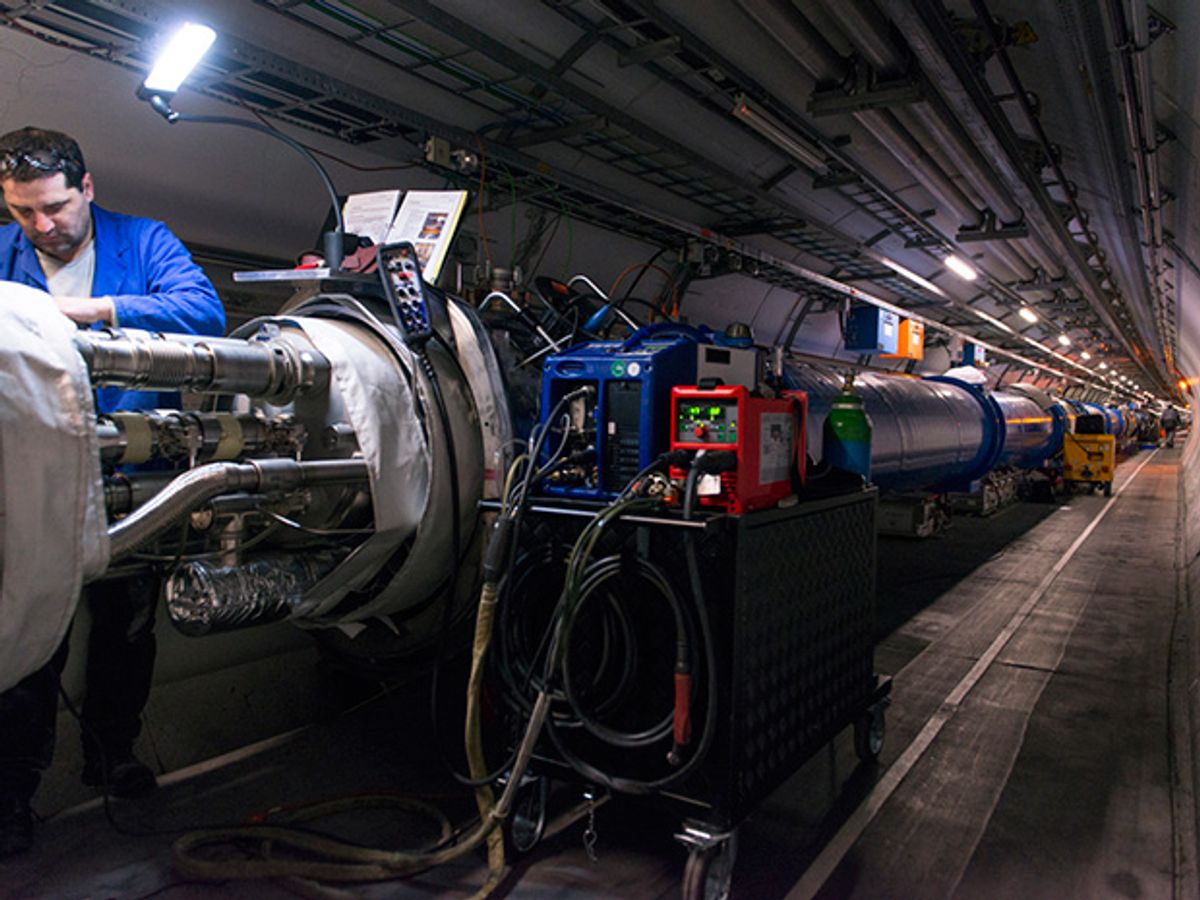What comes after the Large Hadron Collider?
The main successor concept is the International Linear Collider (ILC), which would smash together electrons with a “center of mass energy” of up to 1 teraelectronvolt. It is currently in an advanced state of discussion between scientists mainly from American, European, and Japanese particle physics institutes. Though the collision energies would be but a fraction of those induced by the LHC, the proposed machine would be a "Higgs factory", performing experiments with large numbers of Higgs bosons, allowing a better understanding of the still enigmatic particle.
But China may build it’s own successor system. Scientists there have reportedly completed the initial conceptual design for a much larger circular collider that would smash together protons and be housed in a tunnel twice the size of the LHC’s. Particles would ultimately collide with energies of up to 70 TeV—five times as great as those that produced Higgs particles in the LHC. They hope to complete the conceptual design by the end of 2016.
The Super Proton-Proton Collider or SPPC would be an upgraded version of the LHC, and planners at China's Institute of High Energy Physics aim at a completion date in 2040. However, the 54-km long tunnel would be dug out starting in 2020 and would house, in a first step, a much less powerful machine, the Circular Electron-Positron Collider or CEPC, to be completed in 2025. The tunnel will later be upgraded to house the superconducting magnets of the 70 TeV SPPC.
Just like the ILC, the CEPC will investigate the Higgs particle. The initial phase, which is expected to go online in 2025, and will give electrons and positrons center of mass collision energy approaching 250 gigaelectronvolts. The choice of a circular machine instead of a linear one is somewhat problematic because electrons and positrons start radiating synchrotron radiation when steered into a circular path. “The synchrotron radiation goes with the fourth power of the energy, and there is a huge scaling loss,” says Lyn Evans, director of the International Linear Collider Organization. “They will be pushed to get to the next level, which will be the top quark, which needs 350 GeV in the center of mass, and that would be an exttreme limit for them,” says Evans.
However, CEPC project director Xinchou Lou says the synchrotron losses will be manageable, because the tunnel will be so large that its magnets will have to pull very little on the electrons and positrons to steer them into a circle.
According to Evans, the choice of a circular electron-positron collider could be justified because of the long term plans for the 70 TeV proton-proton collider:
They will build this machine, which will be fairly cheap and the technology is well known, and do the physics with [positrons] and [electrons], but in a second step they will use the same tunnel to make a proton-proton collider, and then you can go to very high energies. However, the technology will be difficult. You will need very high field superconducting magnets, and a lot more R&D.
Despite China’s big plans, there’s a chance it will join the ILC project. “Scientifically, we have support from China, but politically this is another question,” says Evan. “Why would the Chinese government join in in a collaboration for a linear collider while at the same time building a circular machine? That is still a question.”
Asked the same question, CEPC’s Lou is more positive. “Yes, we plan to collaborate,” he says. “The CEPC and the ILC are complementary to each other and together they can bring the measurement of the Higgs properties to an unprecedented precision.”
This post was updated on 8 December to correct the energy figure for the Super Proton-Proton Collider.



